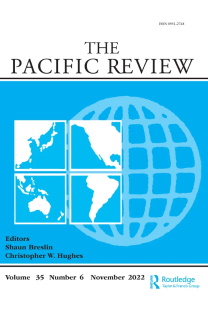East Asia is usually associated with war and conflict. This applies to its historical past, as well as to the present post-Cold War period. In fact, this pessimism on the region has hardened with the worsening structural US-China competition since 2010. Challenging this prevailing view, this special issue argues that the concepts of peace and peaceful change are critical elements to explain East Asian regional dynamics in the post-Cold War period. It poses the following questions: (a) how could peace and peaceful change be analysed conceptually at the regional level?; (b) what type of peace and peaceful change notions are applicable to East Asia?; (c) what are the sources and mechanisms of regional peace in East Asia and its sub-regions and how have the sources and mechanisms changed over the post-Cold War period?; (d) how has the worsening US-China structural competition affected the prospects of peace in East Asia?; and (e) how do the middle powers, namely Japan, South Korea, Australia and Indonesia, contribute to peace and peaceful change in the region? The special issue is the first attempt to systematically apply the concepts of peace and peaceful change on East Asia. The articles identify the sources and mechanisms of peace and peaceful change, apply an eclectic conceptual approach that combines traditional and non-traditional IR theories; and assess the prospects of peace in East Asia in the context of the worsening structural tensions presented by the US-China competition.

